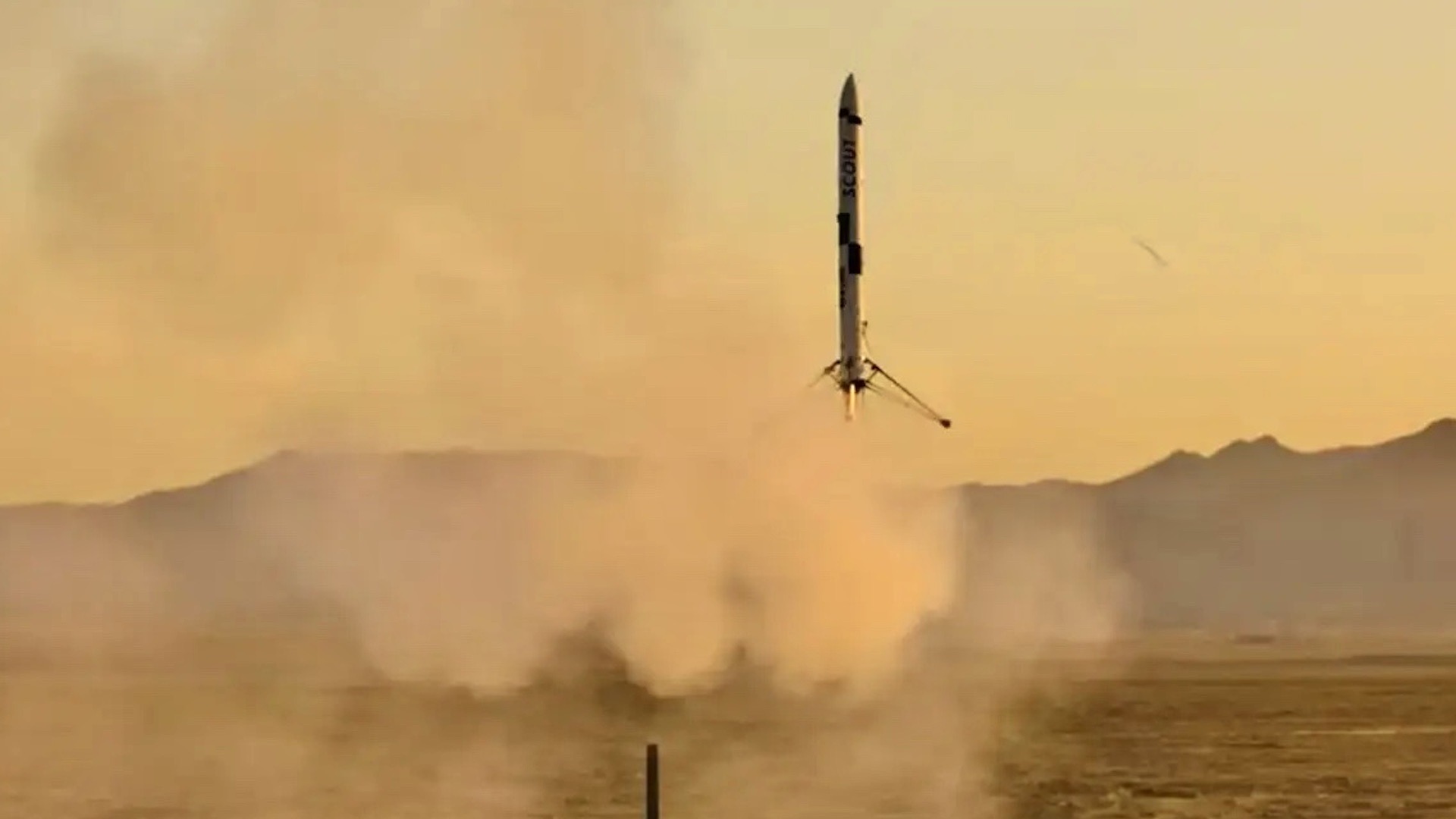

Landing a real rocket with propulsion is an incredibly complex task that took years to perfect; only recently did it cross into the realm of actual practicality. Joe Barnard, creator of the Youtube channel BPS.Space was inspired by SpaceX’s success with the real-world landing of Falcon 9, and decided to build a working model of a landable rocket. After seven years of work, he’s accomplished the extremely difficult task.
The rocket is notable for being, by all accounts I could find, the first model rocket landed with solid rocket motors. Real-world rockets and larger, previous self-landing rocket projects have used liquid fuel, which when mixed with an oxidizer, ignites. This process where oxidizer and fuel are meted out into a combustion chamber together means that liquid-propelled rockets can have their thrust tapered off with precision, like a throttle. This is incredibly important for the process of landing a rocket, where extremely sensitive throttle input is required right up until touchdown.
Model rockets, in contrast, generally use solid rocket engines that mix the oxidizer and fuel into a single package, and they are ignited with heat. This makes them shelf-stable and far less complicated (and expensive) than liquid-fuel rockets, but it also means that the burn cannot be controlled easily. Once the engine is ignited, the entire unit burns up until there’s nothing left; it’s not really a throttle so much as it is an on-off switch. As a result, landing with a model rocket engine requires impeccably precise timing based on altitude, rather than attempting to feather a throttle down to landing.

Further complicating things is that model rockets are usually not steerable. To land a full-size rocket, the boosters are required to pivot and shift direction during landing to ensure the body of the rocket stays upright. It turns out that for a model rocket, the same principle is needed, but on a smaller scale. Barnard ended up building his own custom control board and what he calls a “thrust vectoring mount.” It’s a small casing that fits a rocket motor and rotates to allow it to aim in different directions with high-speed servos. The servos are controlled with a constant deluge of data from a combination of accelerometers, gyroscopes, and barometric pressure sensors (that allow the rocket to know how far it is above the ground at any given point).
Of course, to land the whole thing, it needs a leg to stand on. Four of them, in fact. The legs, however, can’t be released before landing, as they’d ruin the aerodynamic profile and prevent the directional rocket motor from doing its job of allowing the rocket to take off straight-up and land straight-down. Barnard built a set of deployable, tripod-like legs that unfurl the moment before touchdown. These had enough springiness in them to keep them from being damaged during a hard landing but were firm enough to actually absorb the impact.
The entire process has been something Barnard has worked on since 2015, when the real-world Falcon 9 originally landed itself. His original intent with the project was to attract the attention of SpaceX in the hopes of landing a job there; since then, he’s changed his main focus to simply advance the model rocketry world. He’s definitely done that, and his original background isn’t even in rocketry or mechanical engineering; Barnard’s degree is in audio engineering. He learned by practicing, and seven years later, he seems to have achieved perfection.
Got a tip? Email us at tips@thedrive.com